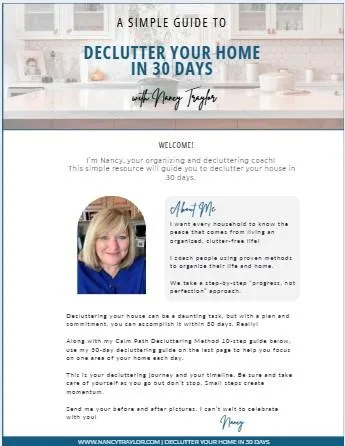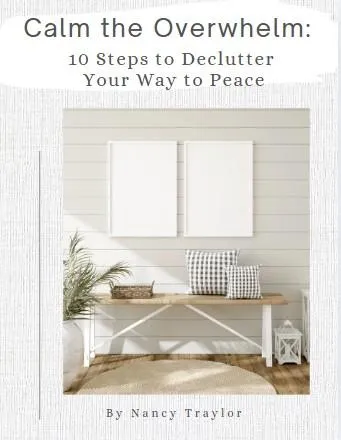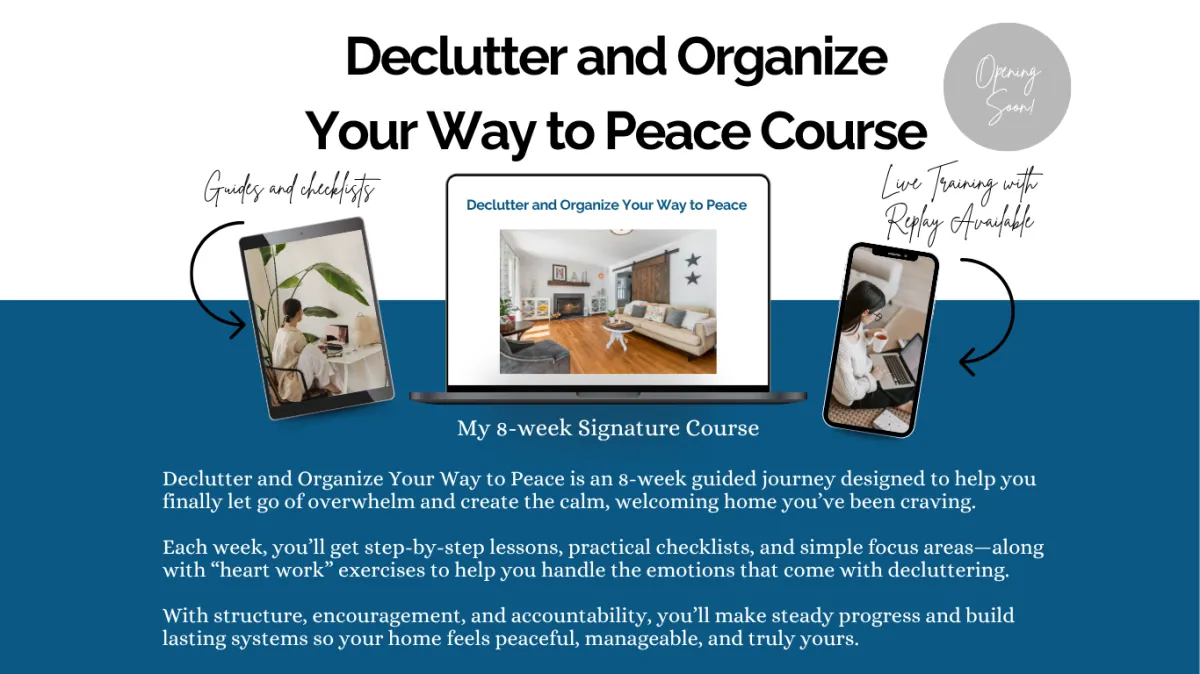Clear the clutter. Find your calm.
Create a home you love.
Does your home feel heavier than it should?
The closets, drawers, and piles that once held memories now feel like they’re holding you back. You’ve tried decluttering before, but the stuff keeps creeping back—or the emotions tied to it make it too hard to keep going. Deep down, you don’t just want an organized home… you want a calm, welcoming space you’re proud to share.
That’s where I come in. I’m Nancy, and I guide women step by step to clear the clutter, release the guilt, and create homes that feel peaceful and manageable—not perfect, but real. Around here, you’ll find simple systems, encouragement when it gets tough, and the reassurance that you don’t have to do this alone.
Ready to begin your journey to peace at home?

Nancy Traylor, Decluttering and Organizing Coach

Get my FREE guide—
Declutter Your House in 30 Days
Take the first step to creating a calm, peaceful home without the clutter that's weighing you down.

eBook
Calm the Overwhelm:
10 Steps to Declutter
Your Way to Peace


Friend,
I know how overwhelming clutter can feel—not just in your home, but in your mind and heart. The good news? You don’t have to stay stuck.
Here, you’ll find encouragement, step-by-step guidance, and the kind of support that makes the process feel doable (and even hopeful).
No matter how long you’ve struggled or how overwhelmed you feel,
peace in your home is possible. And I’d be honored to walk this journey with you.
— Nancy
